The best microSD cards for the Steam Deck
Expand your Steam Deck’s storage with these tried-and-tested cards
The Steam Deck turned three years old recently, which means I’ve spent three years churning around the matter of the best Steam Deck microSD cards in my head. I don’t recommend it! These are not mentally stimulating devices. I do, however, recommend buying one, should you find yourself with a Deck that’s low on storage space. Which, statistically speaking, is most of them. MicroSDs far easier to install than any replacement SSD, and performance-testing them for game load times indicates they can come surprisingly close to matching the speeds of the Deck's built-in storage.
 | Our Favourite Steam Deck microSD CardExcellent speeds, reasonable prices, and a good range of capacities - including a nice, airy 1TB model - make the Samsung Pro Plus the best microSD card you can get for your Steam Deck. |
In fact, I’d go as far as to say that of all the Steam Deck accessories you could upgrade the handheld with – including all its cases and docking stations – a good microSD should be first on your shopping list. That only leaves the question of which card is worth your cash, so have a look below at the best cards I've tried.
Best microSD cards for the Steam Deck
- Samsung Pro Plus - The best microSD card for the Steam Deck overall
- SanDisk Extreme Pro - The fastest microSD card for the Steam Deck
- SanDisk Ultra - The best cheap microSD card for the Steam Deck
- PNY Pro Elite - Fast game launches with better capacity options than the XLR8
- Integral Ultima Pro - Huge capacity options with competitive load times
- Kingston Canvas Go! Plus - Good speeds with a wide range of capacities
- PNY XLR8 microSDXC Gaming – A fast, affordable alternative to the SanDisk Ultra
- Samsung Evo Select - Varied performance, but super cheap
Samsung Pro PlusThe best microSD card for the Steam Deck overall |
|

Samsung have crafted some of the finest PC SSDs (the 870 Evo, the 870 Qvo, the 990 Pro and so on), so it’s not terribly surprising they know their way around a brilliant microSD card for the Steam Deck as well. The Samsung Pro Plus was the first card I tested to get under 11s in the Aperture Desk Job launch test, as well as the first to hit 16s dead in the Shadow of the Tomb Raider loading test. The SanDisk Extreme Pro has since posted even faster load times, but Samsung's microSD has a generally better balance of price and performance.
That's not the same as it being cheap per se, especially compared to the SanDisk Ultra, but generally it’s only a few quids’ / bucks’ difference. Also, it's now got a 1TB option that launched in 2024 - deleting its past weakness of limited high-capacity options.

What we like:
✔️ Fast launch times
✔️ Great performance for the price
✔️ 1TB storage option
SanDisk Extreme ProThe fastest microSD card for the Steam Deck |
|
Even if it’s just by fractions of a second, the SanDisk Extreme Pro has the honour of being the only microSD card here to consistently outspeed the 512GB Steam Deck’s SSD: its 15.6s time in the Shadow of the Tomb Raider game loading test just noses past the SSD’s 15.9s. Should you mainly care about shaving off every possible half-second from your game loading times on the Steam Deck, then the Extreme Pro is the card to go for.
The only reason it’s not at the very top of this list is that the Samsung Pro Plus, which is also quick off the mark, tends to be more attractively priced. That said, some of the Extreme Pro’s capacities – like the 512GB version – are more on par with the Pro Plus in the UK, in which case it’s an excellent alternative. SanDisk’s microSD card also has a wider range of size options than most, including a spacious (if very pricey) 2TB model in the UK.
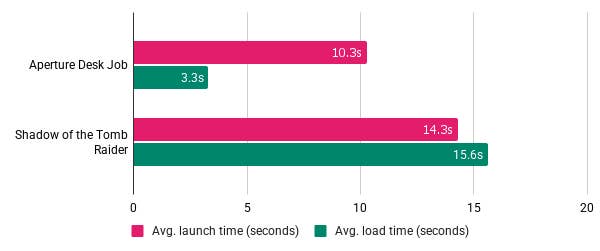
What we like:
✔️ Premium performance
✔️ Wide variety of storage options
✔️ Gigantic 2TB option
SanDisk UltraThe best cheap microSD card for the Steam Deck |
|

The SanDisk Ultra offers a wider range of capacities than the Pro Plus, with lower prices across the board. This is partly owing to its lower U1 speed class, meaning its write speeds aren’t as fast as U3 models, but that’s more of a concern for videographers needing a microSD card for their camera. Where games performance is concerned, read speed is king, and the affordable Ultra can keep pace with pricier cards.
It put up an especially spry challenge in Aperture Desk Job, and even its 'worst' performance – the Shadow of the Tomb Raider load test – was less than half a second slower than the Deck’s top-spec SSD. That said, I’d recommend going for a bigger capacity than the 64GB card I used for testing; the 256GB and 512GB models are both particularly good deals at their current prices, and the 1TB version is a bargain compared to the 1TB SanDisk Extreme Pro. The SanDisk Ultra also offers a 1.5TB option which, outside of a few, extremely rare 2TB cards, is as much microSD storage as your Steam Deck can get.
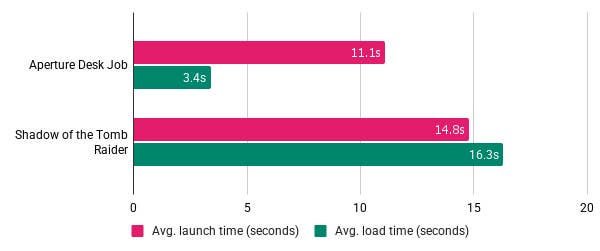
What we like:
✔️ Low prices for all models
✔️ Only fractionally slower than the Deck's top-spec SSD
✔️ 1TB and 1.5TB capacities
PNY Pro EliteFast game launches with better capacity options than the XLR8 |
|

Despite a U1 speed class putting it among the slower microSDs on theoretical read/write speeds, the PNY Pro Elite actually manages some pretty enviable launch times: it matched the Samsung Pro Plus at booting up Aperture Desk Job, and even beat it (if only by 0.1 seconds) in Shadow of the Tomb Raider.
Its in-game save loading times aren’t quite as impressive, but they’re still a step up from most budget microSDs. Its 3.3s in Aperture Desk Job also gives it a win against its PNY stablemate, the XLR8 microSDXC Gaming, as does its wider range of available capacities. These stretch right up to 1TB, enough to give even the most basic Steam Deck the storage space of a proper desktop PC.
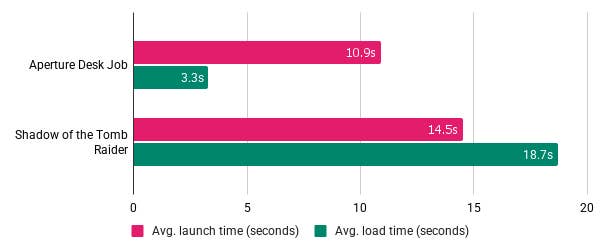
What we like:
✔️ Fast launch times despite speed class
✔️ Budget price tags
✔️ Up to 1TB extra storage
Integral Ultima ProHuge capacity options with competitive load times |
|
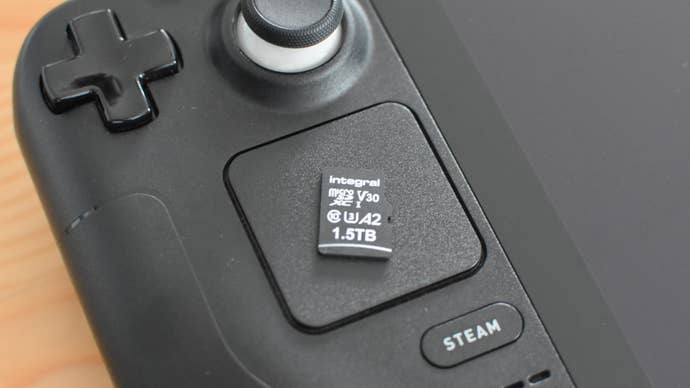
MicroSD cards took their sweet time in offering capacities above 1TB, but they’re here now – to the Steam Deck’s benefit. The SanDisk Ultra’s 1.5TB model is cheaper but the Integral Ultima Pro is another compelling option, maxing out at the same high capacity and often keeping pace with the faster cards in this list. Its Aperture Desk Job load times are right up there with the best of the best, and although its Shadow of the Tomb Raider results aren’t quite as elite, they still beat budget fare like the Samsung Evo Select. Which, not to labour the point, doesn’t come anywhere near the sheer spaciousness of the biggest Ultima Pro variants.
It’s just a shame that, at the time of writing, this card isn’t reliably sold in the US – unlike in the UK, where all seven capacities are going at agreeable prices. More 1.5TB microSDs, more widely available, equals more happy Steam Deck owners.
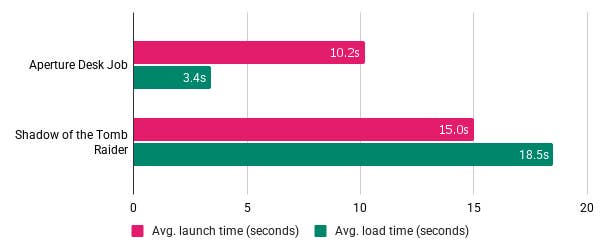
What we like:
✔️ 1.5TB model
✔️ Impressive load times
✔️ Relatively cheap 1TB model
Kingston Canvas Go! PlusGood speeds with a wide range of capacities |
|
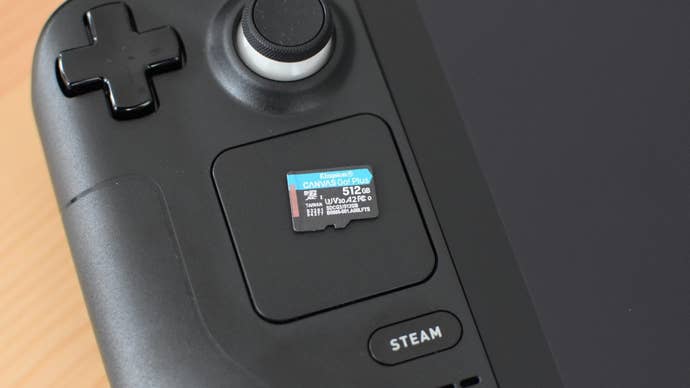
According to its marketing prose, the Kingston Canvas Go! Plus is for "adventurers." Is playing God of War on the 11:55 Paddington to Swindon service an adventure? Either way, this microSD card proves it can suit the Steam Deck just as well as a GoPro, with a particularly zippy average time in the Shadow of the Tomb Raider launch test.
Since I originally added it to this list, the family has also welcomed a 1TB model, eliminating the previous weakness of maxing out at 512GB. The catch is that no particular version of the Canvas Go Exclamation Mark Plus is especially cheap, even compared to faster microSDs like the Samsung Pro Plus, but they're all still decently priced for the performance they offer.
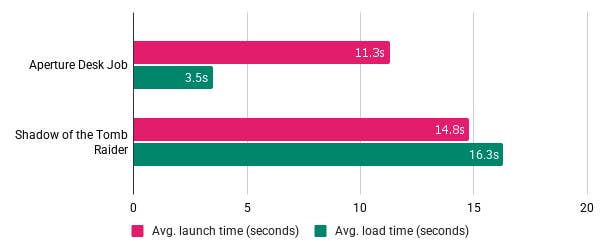
What we like:
✔️ Good launch times
✔️ Decent price tag
✔️ 1TB storage option
PNY XLR8 microSDXC GamingA fast, affordable alternative to the SanDisk Ultra |
|

A rare games-focused card, the PNY XLR8 microSDXC Gaming put up respectable times in all four speed tests without any cheeky price premiums. In fact, for sheer affordability, the XLR8 is either a few pounds less or just a little more than the equivalent SanDisk Ultra capacity. And that’s while offering class U3 write speeds, which might be helpful if you’re planning to use the Steam Deck as a desktop PC even if they’re not as useful to gaming specifically.
After months of largely being a US-favoured proposition, all three varieties of the XLR8 are now easily available in the UK as well. The SanDisk Ultra has the advantage of a wider capacity range, including a 1TB model, but otherwise there's very little between these two microSD cards on price or Steam Deck performance.

What we like:
✔️ Rare to find a gaming-focused card
✔️ Did well in all our speed tests
✔️ Reasonable prices
Samsung Evo SelectVaried performance, but super cheap |
|
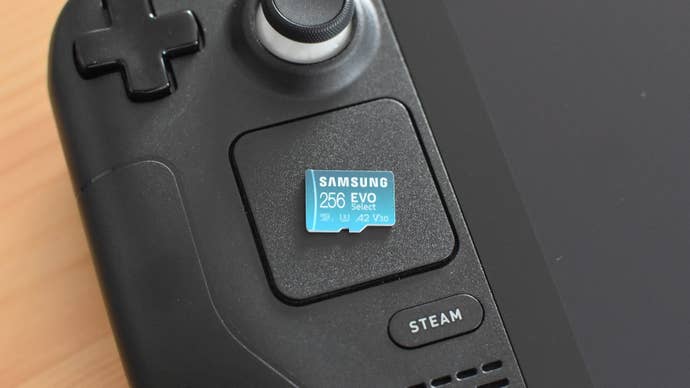
The Samsung Evo Select looks like a tasty microSD bargain: as I’m writing this it’s even cheaper than the SanDisk Ultra, despite its higher specs, and its performance in our Aperture Desk Job benchmarks was only behind the elite Samsung Pro Plus and SanDisk Extreme Pro. If you felt the sting of the Steam Deck itself in your finances, this kind of affordability will feel like a soothing aloe balm.
It’s only a disappointing result in the Shadow of the Tomb Raider loading test that denies the Evo Select a higher position in this list, though to be fair, its launching speed for the same game is much more competitive with the pricier stuff. It’s still a good bet for those wanting a budget microSD specifically.
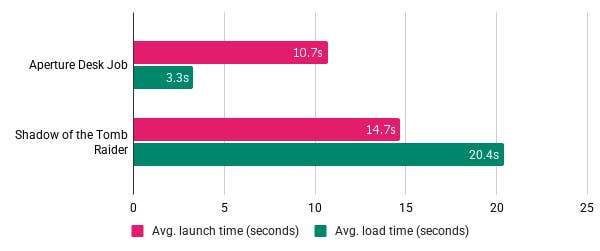
What we like:
✔️ Bargain price tags
✔️ Respectable launch speeds
✔️ Only beaten in our tests by a few, elite cards
The best microSD cards for the Steam Deck: FAQ
What microSD cards are compatible with the Steam Deck?
Whereas over in console land, the Nintendo Switch 2 requires a high-end microSD Express card, the Steam Deck’s microSD requirements aren’t very demanding at all. Any UHS-I microSD should work, including microSDXC (Expanded Capacity) and microSDHC (High Capacity) cards. You’re best off looking at SDXC cards, though, like the ones listed above: standard microSD cards are limited to a piddly 2GB, while microSDHC cards max out at 32GB. Since only microSDXC cards can therefore occupy the 64GB-2TB range, they’re the ones to focus on to make sure you’re adding sufficient space.

Once you’ve got a compatible microSD card, it’s just a case of pushing it into the slot on the bottom edge of the Steam Deck until it clicks into place, then going into the SteamOS System settings to format it. From there, you can set it as the default game installation location in the Storage settings. To remove the microSD card, push it even further into the slot until the lock releases, sending it popping partway out.
Do I need to format my Steam Deck’s microSD card?
Probably, as microSDs normally don’t come ready-to-use on a Linux system like the Steam Deck. Luckily, formatting the microSD card yourself is easy. Just slide it into the port on the Deck’s bottom edge, power it on, then navigate to the System section of the main Settings menu. Scroll down to 'Format SD Card', hit the Format button, and in a few moments your card will be set up and ready to roll.
Is there any performance difference between installing games on a microSD card or on the Steam Deck’s SSD?
In most games, the only tangible difference is in load times; you won’t get slower framerates on a microSD card, for example. The only games that might not work as well as they do on the SSD are those that specifically take advantage of high SSD speeds, like Cyberpunk 2077’s open world streaming and Ratchet & Clank: Rift Apart’s dimension-hopping sequences. In the latter’s case, the game essentially sits on a loop for a few seconds so the game can load in the new scene from the microSD card, a transition that’s more or less instantaneous on an SSD.
To be clear, though, these examples are extremely rare. The only other egregious example I can think of is Starfield, which needs an SSD even on a beefy desktop PC. And that won’t run at acceptable framerates on the Steam Deck’s APU anyway, so storage is a moot point. The vast majority of your library should run just fine off a microSD.
Can I set a microSD card as my Steam Deck’s default drive?
Yep! In the main Settings menu, scroll down to the Storage section, then highlight the microSD card and press the X button to set it as the default installation location.
In this same sub-menu, you can also move games between the internal drive and the microSD. Select the game you want to move, press the Y button, make sure the other drive is selected in the drop-down menu, and finally hit 'Move' to transfer it over.
What do microSD interfaces and speed classes mean?
UHS (Ultra High Speed) is the current interface standard for SD and microSD cards, with specific ratings like UHS-I, UHS-II, and UHS-III denoting maximum transfer speeds. UHS-I cards have a max speed of 104MB/s, while UHS-II and UHS-III can reach 312MB/s and 624MB/s respectively.
On the Steam Deck, Valve opted for the UHS-I interface, the same that Nintendo used for the original Switch (which, I guess, makes the above list a guide to Switch microSD cards as well). UHS-II and UHS-III cards are backwards compatible with UHS-I, so you could use them in the Deck, but you’d be limited to UHS-I speeds; as such, theres’s little point in spending more to get the newer interfaces. Besides, game launching and loading times depend on non-sequential read speeds, which normally don’t come close to the advertised maximum sequential speeds anyway.
(For what it's worth, UHS-II and UHS-III microSD slots are likewise backwards compatible with UHS-I microSD cards, which is why you can use any of the cards listed above with the UHS-II-equipped Asus ROG Ally. If, hypothetically, you wanted to ditch your Steam Deck in favour of Asus' more powerful handheld, any microSD card you bought for the former would still work in the latter.)
Another spec you might see printed on microSD cards is the speed class, like U1 or U3. Rather than general maximum speeds, these represent minimum sequential write speeds: U1 is 10MB/s, U3 is 30MB/s. Again, these ratings don’t have any real bearing on how fast your Steam Deck games will load, though it might be worth plumping for a U3 card if you’re using your Deck as a full-on desktop replacement, where faster write speeds will come in handy more often.
Finally, there are "Application Performance Class" ratings, which might actually be more relevant to the Steam Deck than UHS or U ratings as they pertain specifically to how well-suited the cards are to running software apps. Games, in other words. These also represent minimum read/write speeds rather than maximums, which you might find more reassuring for heavy usage.
There are only two ratings to consider: A1 and A2. A1 cards are rated for 1500 IOPS (Input/Output Operations Per Second) for reads and 500 IOPS for writes, while A2 cards are rated for 4000 and 2000 IOPS for reads and writes respectively. Clearly, then, you should aim for an A2 microSD if you want high performance, though some A1 cards can be surprisingly peppy as well, as the SanDisk Ultra demonstrates.

